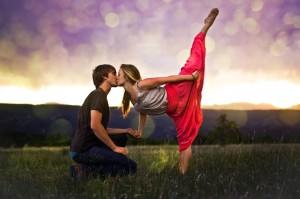
By Kira Roberts
1) Daydream: Most shots that make people think “wow” don’t just happen on their own. Envision an idea, think about the kind of look you want to end up with, and plan accordingly. Think about things like what time of day, setting, outfits/model, and props. If you aren’t shooting people, think about different ways to capture what we may see every day (ex. Sunsets, trees, grass, etc).
2) Watch YouTube videos and read, read, READ: I’m not kidding. You can literally learn anything you want to on the internet! Of course, you can’t actually get better at it if you don’t go out and practice. As a completely self-taught photographer, I can’t stress how helpful books, articles, and videos have been! I learned everything I know about camera settings and taking pictures this way, but I also learned (and am still learning) how to edit in Lightroom and Photoshop from books and online tutorials. One of my favorite author/photographers is Scott Kelby; any of his books or tutorials are a great place to start.
3) Don’t be afraid to try something silly: At first I felt awkward taking pictures of something different because of the weird looks I would get, but now I’m used to it. One time my brother and I dragged his drum set out into the middle of a field with a trail next to it and I took some pictures of him playing. Needless to say, we got some strange looks by people walking by at eight in the morning, but it was totally worth it when the pictures turned out cool!
4) Practice the things you are most uncomfortable with: You’ll never get better if you only photograph the things or people you are comfortable with. For example, I am very comfortable shooting girls (with my camera of course.), but posing guys comes way less naturally to me. I plan on asking a few of my guy friends to let me photograph them so I can improve.
5) Make friends with other photographers: I can’t stress this one enough. I’m not going to lie and say that it’s always easy to be friends with your ‘competition,’ but you can learn SO much from each other! Be open to tips and ideas, even if you secretly don’t like their style very much. Also, if other photographers know you and your work, then they can refer people to you if they aren’t available.
6) Learn as much as you can with the camera/lens you have before getting new equipment: You can do so much more with a simple dslr and a kit lens than you might think. Once you have some experience with all the settings and really understand how everything works, then begin to think about investing in some different lenses.
7) Pay attention to composition and angles: Always try to shoot things from different angles than you would normally see them (this doesn’t always apply to portraits). For example, if you are taking a picture of a flower, don’t shoot looking down at it if you want to get a spectacular picture, Get down on the ground and go sideways or even pick it and hold it up to shoot underneath it! Get the idea? This is definitely something I am still working on as well because it doesn’t come super naturally.
8) Only post your favorite photos: You always want to leave people wanting more, rather than looking through an album of the same pictures at five different angles. I definitely still struggle with this because it’s tough to leave pictures out, but when I look through other people’s albums with hundreds of pictures I get bored and usually don’t even get all the way through!
9) Do your best to get the best image you can before post processing: Editing can really make a photo pop, but if you don’t have a good enough image before putting it on your computer, you can end up having to do much more than you intended to (if it can even be fixed). The better the original quality, the less time you will have to spend and the faster you can share your work with others (one of my favorite parts of photography)!
10) Shoot in RAW: Your camera probably automatically sets to shoot in JPEG, but you should change it to RAW. JPEG, or large format, saves the picture as a snapshot of what is visible. When you take a photo in RAW it saves all the data that the camera records at the time of the exposure. This means that in post-processing you can bring back much more light and color without making the photo look grainy or fake. RAW does take up a lot more memory, but it’s so worth it to get better quality images!
-Kira Roberts runs a photography business, KiraWhitneyPhotography.